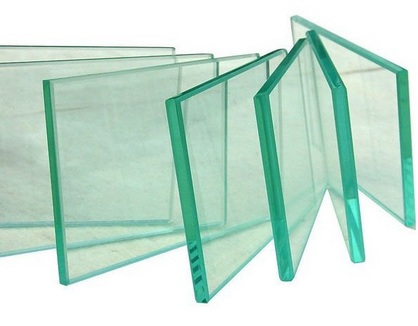With rising energy costs and growing concerns about environmental degradation, prioritising energy efficiency is no longer a choice but a necessity.
While every building component plays a crucial role in this, glass serves as a key factor in reducing energy consumption and crafting more eco-friendly spaces.
This blog will compare two popular glass options, green-tinted glass and clear glass, with a primary focus on their energy efficiency, helping you narrow down your search for energy-efficient glass.
Green-Tinted Glass: A Solar Control Solution
Green-tinted glass is a specialised glass solution that is manufactured by adding specific metal oxides to the raw material. This addition imparts a tint to the glass while enhancing its heat-absorbing properties.
The resulting green-tinted glass, therefore, absorbs around 30% to 45% of solar heat (depending on tint and thickness), significantly decreasing the amount of solar radiation that enters a building and making the structure highly energy-efficient and environmentally friendly.
This offers several benefits, including:
- Minimised heat gain and solar glare
- Reduced air-conditioning usage and energy costs
- Improved occupant comfort
- Enhanced UV protection
- Minimal fading of furniture and carpets.
Clear Glass: A Transparent Solution
Clear glass is a versatile glass solution that boasts a uniform, smooth surface with a transparent, crystal-clear finish which allows for natural light transmission and ensures a distortion-free vision.
This provides different advantages, such as:
- Maximum natural light transmission
- Reduced need for artificial lighting
- Unobstructed and clear views
- Improved aesthetics
Unlike green-tinted glass, clear glass does not absorb solar heat, leading to comparatively increased heat and higher energy costs.
In terms of energy efficiency, clear glass itself does not possess energy-efficient properties. However, it can be transformed into a high-performance solution by applying various coatings, such as:
- Low-E Coating: This coating is used to minimise heat transfer between spaces or environments and reduce energy loss.
- Glare Control Coating: This type of coating is applied to absorb sunlight glare and reduce its reflectivity from the glass surface.
- Tinted Coating: Tinted coating absorbs solar heat and glare which in turn reduces heat gain, lowers energy bills and protects belongings from degradation.
- Insulation Coating: Such coatings are used to minimise thermal conductivity, reflect radiant heat and create a thermal barrier.
Green-Tinted Glass Vs. Clear Glass: A Comparison Based on Energy-Efficiency
When it comes to energy efficiency, green-tinted glass is generally considered to be a better option as it absorbs solar heat, resulting in reduced energy consumption and electricity bills.
This makes green-tinted glass a good choice for buildings located in warm climates or areas with high solar exposure.
On the other hand, clear glass, while aesthetically pleasing, allows heat transfer which increases energy consumption.
However, this does not mean that clear glass cannot be energy-efficient. When paired with advanced coatings offering heat insulation, clear glass can be a suitable option.
Thanks to these coatings and treatments, clear glass can transform a normal space into an energy-efficient one while maintaining transparency and aesthetic appeal.
Green-Tinted Glass Vs. Clear Glass: A Comparison Based on Other Factors
| Parameter | Green-Tinted Glass | Clear Glass |
| Maintenance | Easy to clean as it is resistant to dirt and stains | Easy to clean but may show dirt and stains |
| Cost | Generally more expensive | Comparatively less expensive |
| Weight | Heavier | Usually lighter than green-tinted glass |
| Suitability | Ideal for those who want an added level of privacy | Perfect for those who want to make their home feel more spacious and open |
| Benefits | Solar heat absorption, enhanced aesthetical appearance and protection against glare | 100% distortion-free, clarity of vision and sparkling surface |
| Usage | Partitions, doors, shelves, furniture and windows | Shopfronts, partitions, doors, shelves, furniture and windows |
Coming to an End
From an energy efficiency perspective, green-tinted glass and clear glass have their own strengths and weaknesses.
Ultimately, the choice between both options depends on specific building requirements, climate, budget and design preferences.
By considering factors such as solar exposure, thermal performance and visual appeal, architects, designers and builders can select the right glass to achieve the required level of energy efficiency and sustainability objectives.
Whether you need clear or green-tinted glass, AIS Glass has it all in its comprehensive selection of products that address varying architectural needs.
To find the perfect glass solution for your project, visit AIS Glass right away.

